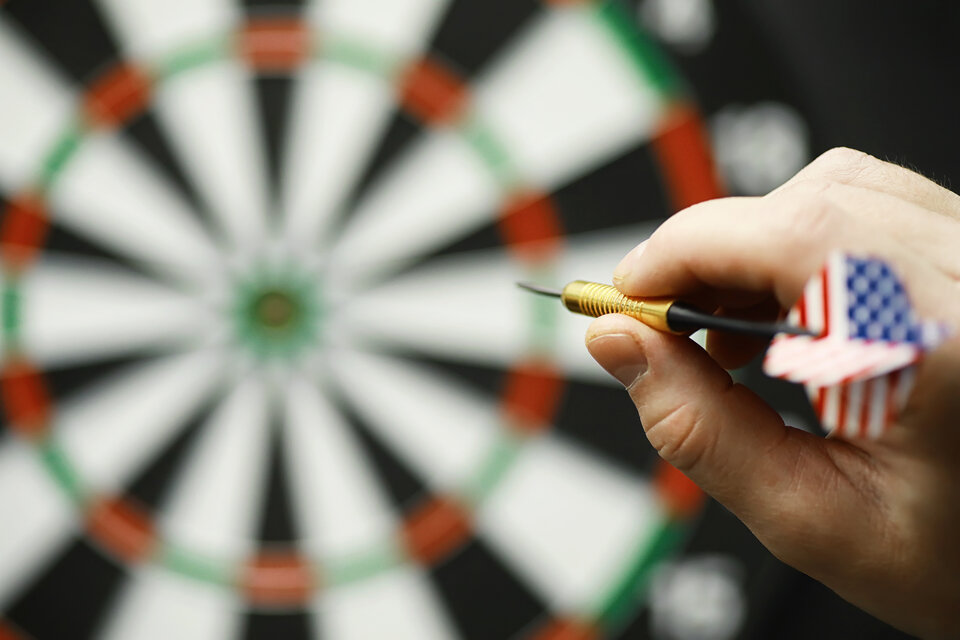The first point to make, is there is no right or wrong way to grip a dart.
However, there are a few basic rules to follow when gripping a dart for the first time.
Find the dart’s centre of gravity by placing it in the palm of the hand you will be using to throw it with. Then, move the dart to the fingertips of the same hand, keeping it in the same position and take hold of the dart, with your thumb one side of the barrel and your fingers on the other.
Make sure your grip is not too loose or too tight. Imagine holding something light and fragile in your hand, if you hold it too tight, it will break but if you hold too lightly, it will fall. Darts is a precision sport and accuracy can only be found with a controlling but relaxed grip.
The number of fingers you use when holding the dart will influence the amount of control on the dart and the ease in which it leaves your hand. The more fingers you have on the dart, the more control you can place on it but the more difficult it will be to release. A good starting point is to place three fingers on the dart and practice like that, before making any changes. The length and shape of the barrel on the dart you are using will also impact on how many fingers you hold it with.
Any fingers which are not being used to hold the dart should remain apart and not closed into a fist. Closing the fingers up will produce extra tension in your hand and result in a poor throw, so keep them open and relaxed. When using steel tip darts, the tip of the dart should be facing up. Always check this, especially if your dart is not hitting the dartboard with the tip first.
With your grip in place, it's now time to throw the dart.
When throwing the dart, do not move your body, this should remain stationary at all times, once in place at the oche. Ensure your eyes, the dart and the part of the dartboard you are aiming for, are in line when taking aim. When moving the dart back, it’s best to avoid contact with your face if possible. Some players like to do this and it’s great to move the dart back as far as possible but any additional contact may disrupt the throwing mechanism.
When accelerating forward, do so at a natural pace. There is no need to force it, just concentrate on doing it naturally, all the way to the follow through. When releasing the dart, the tip must be pointing forwards, not down and as you have the correct grip in place, the actual release of the dart will come naturally. Again, do not force it. If you have the correct elements in place, as described here, the release will come naturally.
To finish the release, do not forget to follow through with your arm, at which point your hand should be pointing at the chosen target on the dartboard. Keep it there for a brief moment, before allowing it to fall.
These are the basic principles of how to hold a dart and how to throw it - now keep practicing that technique!
*updated version May 2022






Comments (0)